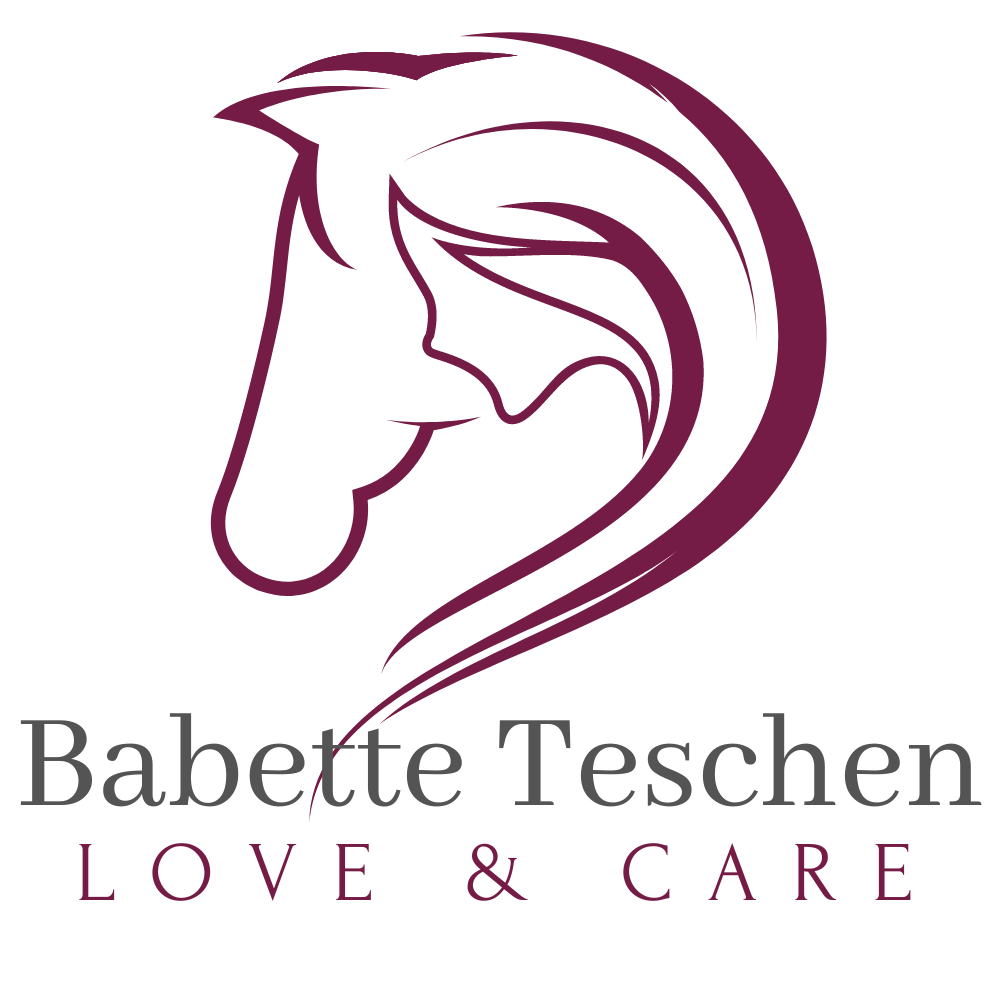Signs of a Supple Horse | Horse Training
by Babette Teschen
The most important requirement for a good and correct movement pattern is suppleness. Horses that are tense, nervous or afraid will always move in a rather bad manner.
Note:
We define suppleness in the horse when he is physically and mentally relaxed and enjoys the work.
A supple horse lets his neck stretch forward down calmly from the withers as we can see here with Losti. The under-neck muscles, marked in orange, need to be relaxed:
In trot the tail should swing left and right in a steady rhythm and the movements should look soft and elastic.
A further sign of suppleness is a supple back. Horses that are not supple often carry their head too high as you can see here with Dunnit:
As soon as the horse lifts his head, he tenses up his back muscles.
In this clip Dunnit clearly moves with better relaxation. He allows his neck to stretch forward down from the withers which causes his back to swing much looser:
Compared to a supple horse, a tense horse tends to explode by rushing off and bucking. Such explosions cannot simply be labeled bad behavior and should not be punished. Rather see this as an incentive to provide more relaxation and joyful work for your horse.
Other typical signs are tail swishing, head shaking to avoid contact, biting, pushing, or stress chewing and a stressed facial expression. Before we proceed, we need to determine the cause and create a more relaxed environment.
What is that strange noise coming from the sheath?
Sheath noise is a gurgling noise sometimes heard when geldings or stallions move. These sucking noises are caused by air being sucked into the prepuce. These noises are not always associated with tension. Sometimes, this sheath noise can be heard in some male horses that are supple. However, it is a fact that this sucking sound is prevalent in tense horses and also horses who don’t breathe well.
Breathing
Breathing is a big component of suppleness. A relaxed snorting is always a positive sign of relaxation. Horses who tend to cough as they transition into trot don’t necessarily have a medical issue, but often show signs of tensed breathing. Every case needs to be determined separately.
Flensburger, for example, has a chronic illness of his breathing organs. We can clearly see his tensed stomach muscles. This prevents the back muscles from stretching and the breath cannot move freely.
Even these horses, however, can benefit from working on the lunge, but their medical condition should always be considered if we think the horse seems “lazy” or “uncooperative”. This could be a clear sign of breathing difficulties. In certain cases, it is advisable to consult with your vet on a treatment plan.
How to Help Achieve Suppleness
Suppleness throughout the body can be achieved with targeted exercises. The better a horse understands to move well on a circle, the more his muscles and mind will relax. In numerous videos we show you many exercises in our Course in Lunging.
With a gentle touch and massage you can have direct influence on the tense muscles and create more well-being and relaxation in your horse. This, too, we demonstrate in the videos of our Course in Lunging.
For a horse to move with suppleness it is essential to also be mentally supple. This can be achieved through a relaxed, cheerful working environment without fear or pain.
Unfortunately, in horse training we still see too much stress, pressure and even force – all factors that hinder physical and mental suppleness. Patience, calm, and a lot of praise are especially important and a horse should never have to fear punishment.





